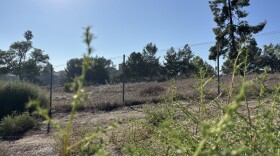The company that owns the sunken Deepwater Horizon rig said Thursday that it planned to petition a federal court in Houston to cap its overall liability from the incident at less than $27 million.
A spokesman for the Swiss company said the company will cite an 1851 law that says the owner of a sunken vessel is liable only for its value after the accident. Transocean has been named in more than 100 class action, personal injury and wrongful death lawsuits, but a liability limit would cap the amount it would be forced to pay if it loses any of the lawsuits related to the April 20 rig explosion that killed 11.
Transocean expects to receive $560 million in insurance money from the loss of the Deepwater Horizon. If the court approves the liability limit, the company would be left with about $533 million, almost enough to cover its original revenue expectations over a three-year contract with BP.
BP leases the well that's now spewing 210,000 gallons of crude into the Gulf of Mexico each day.
The announcement comes as a group of West Coast lawmakers announced a proposed ban on offshore drilling along their states' coastlines, one day after congressional hearings raised questions about oil platform fail-safe equipment that allowed the gusher.
At a news conference, Sen. Barbara Boxer (D-CA) read off the one-sentence legislation that would ban the lease for "exploration, development or production of oil or natural gas in any area of the outer continental shelf off the coast of California, Oregon or Washington."
Boxer was accompanied by her fellow Democratic senator from California, Dianne Feinstein, and Sens. Maria Cantwell (D-WA) and Jeff Merkley (D-OR).
"This is very important. The risk of a spill is too great," Boxer told reporters. "For years, we were protected by a moratorium that was re-enacted every year since 1982. It lasted for 26 years. It no longer is in place."
Earlier in the week, Florida Gov. Charlie Crist said he would call a special legislative session this month to push a similar ban.
Some 5,000 barrels of oil a day have been spewing into the Gulf since the rig blast caused a rupture in the undersea pipeline that feeds it. Engineers from BP are readying more options to stanch the flow after a previous attempt failed.
For years, we were protected by a moratorium that was re-enacted every year since 1982. It lasted for 26 years. It no longer is in place.
Last week, BP tried unsuccessfully to lower a concrete structure over the leak in hopes of channeling the oil to the surface in a controlled manner. That attempt failed when methane ice and debris jammed the device.
BP officials said Thursday they would thread a small tube into a jagged pipe on the seafloor to suck oil to the surface before it can spew into the Gulf and add to a disaster apparently set in motion by a long list of equipment failures.
Engineers will have to make sure the 6-inch-wide tube is inserted deep enough into the 21-inch-wide pipe so gas and seawater don't mix, which can form crystals that could clog the tube. They'll also have to thread the tube into the pipe without hitting debris around the riser.
The smaller tube will be surrounded by a stopper to keep oil from leaking into the sea. The tube will then siphon the crude to a tanker at the surface.
Company spokesman Bill Salvin said engineers hope to start moving the tube into place Thursday night. Another option is a small containment box called a "top hat," which is already on the seafloor and also would siphon oil to a tanker on the surface.
Despite the difficulty in stopping the flow of oil, which threatens delicate ecosystems from Louisiana to Florida, Energy Secretary Steven Chu, who visited BP offices in Houston on Wednesday, said he's more confident that the problem will be resolved.
"Progress is being made," Chu said.
The Deepwater Horizon disaster has prompted a wholesale rethinking of how the body that currently collects offshore drilling fees for the government and provides safety oversight should be run. The Minerals Management Service has been the object of severe criticism for being too cozy with the companies it regulates since well before the blowout in the Gulf.
Interior Secretary Ken Salazar has proposed splitting the MMS in two to make safety enforcement independent of the agency's other main function -- collecting billions in royalties from the drilling industry.
A group of Louisiana crab fishermen on Wednesday claimed in a lawsuit that oil services firm Halliburton — with the permission of BP and Transocean — used a new quick-curing cement mix with nitrogen. The suit claims that the cement mix generates more heat than other mixes and could allow dangerous bursts of methane gas to escape up the well.
In testimony before an investigative panel this week, evidence has emerged that just before the Deepwater Horizon accident, workers conducted two separate tests at the well to determine whether it was leaking. Both tests failed, but workers decided to resume work anyway.
Heavy drilling fluid was then pumped out of a pipe rising to the surface from the wellhead –- a move that further reduced pressure. It was replaced with lighter seawater in preparation for placing the last cement plug. But the last plug was still missing when drilling fluid backed up uncontrollably through the well just before 10 p.m. CDT April 20.
Rig operators then tried unsuccessfully to activate a fail-safe blowout preventer. Testimony Wednesday revealed that the device — intended to be the last defense against an uncontrolled rupture -- was deficient in multiple ways that kept it from working as designed.
Copyright 2022 NPR. To see more, visit https://www.npr.org. 9(MDAzMjM2NDYzMDEyMzc1Njk5NjAxNzY3OQ001))






